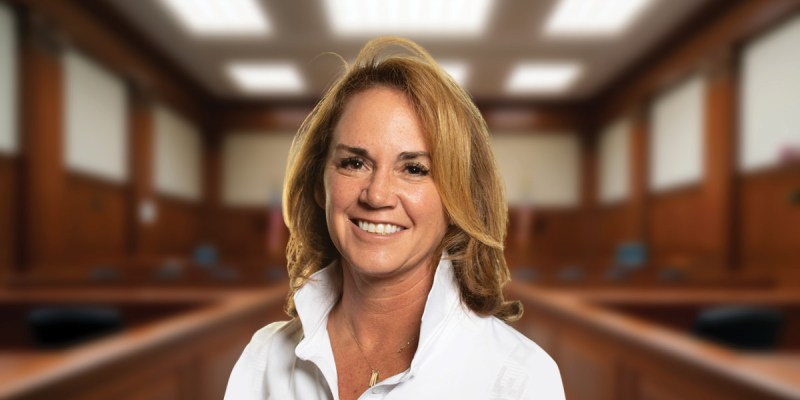During the past year, down seems like the only direction people know. Everything, including stocks, home prices and the overall health of economy, has been declining.
However, with the uncertain economic times likely to continue for the near future, more and more New York high school students, older adults and the recently unemployed are turning to the City University of New York (CUNY) for help and the hope of a better future.
“In difficult economic times, students and their families especially appreciate the high value of an education at a CUNY college,” said CUNY Chancellor Matthew Goldstein.
TOUGHER COMPETITION
Affordability and accessibility are two key factors causing the applicant pool at CUNY institutions to skyrocket and diversify, according to college officials.
With the state of the economy, “families are realizing that going to [a] private institution is impossible,” said Eduardo Martí, President of Queensborough Community College. “Students are then going to public institutions.”
From the fall 2008 to the spring 2009 semester, Queensborough Community College has tracked a 5.5 percent increase in the number of applications they have received.
“That’s significant because generally we have a decrease in the spring,” said Martí. As a result, Queensborough shut this year’s enrollment for the spring early because of the high number of applicants.
Meanwhile, LaGuardia Community College has seen older adults enrolling in greater numbers. Admission figures indicate that there is a 34 percent increase in the number of non-traditional-aged students who are 22 years and older during the past year.
“Unfortunately, a number of these students have lost their jobs and are coming back to school to retool or to pursue a degree that they have put off,” said Dr. Peter Jordan, Vice President for Enrollment Management and Student Development at LaGuardia Community College.
Another pool of applicants seeing an increase is out-of-borough students. In the fall of 2008, LaGuardia enrolled 4,075 students living outside of New York City. Across the borough at Queens College, it estimated a 63 percent increase of out-of-borough student applicants, according to Vincent Angrisani, Executive Director of Enrollment Management at Queens College.
Overall, CUNY has been drawing 166 percent more first-time freshmen with combined math-verbal SAT scores of 1,200 or higher – 1,479 such students compared to 559 in 1999, according to CUNY statistics.
This elevated requirement has made some schools even more selective. Queens College has bumped up their freshman admission mean SAT score to 1,116.
“The number of freshmen applying for fall 2009 admission to Queens College is up 15 percent compared to fall 2008,” Angrisani said. “And, the percentage of admitted students is up 34 percent, even with our higher admissions standards. This means we are seeing better-qualified applicants overall.”
Although CUNY does rolling admissions, senior and community colleges have separate requirements they look for in admitting students. Senior colleges base their first-time admissions on SAT scores and high school transcripts, while community colleges only require students to have a GED or a high school diploma.
Unlike senior colleges, students interested in attending a community college are admitted into programs on a first come, first served basis. These programs have been reaching capacity at a faster rate – in part because of the rocky economy, officials said.
In order to better the chance of admittance in any CUNY institution, college officials are encouraging students to apply early.
ADJUSTING TO MORE STUDENTS
With more and more students coming in, CUNY colleges are doing several things to accommodate more students and maintain the quality education they receive.
“We are investing in CUNY by attracting world-class faculty, building modern facilities and creating innovative academic programs in the most exciting city in the world,” said Chancellor Goldstein. “The University today is among the best values in higher education.”
This month, the LaGuardia Community College Foundation launched its “Spring Into Action” scholarship campaign to support students with a financial aid need. Students – whether they are new, returning, out-of state or international – can apply to receive a scholarship of $3,500, which can cover LaGuardia’s tuition for one, and in some cases, two semesters.
“The ‘Spring Into Action’ Scholarship Campaign calls upon every member of our community to make a LaGuardia Community College education accessible to students,” said LaGuardia Vice President of Institutional Advancement E. Ramone Segree. “By eliciting the support of corporations, foundations and individuals who care about higher education, we are not only investing in a student’s life, but the future of our community.”
At Queensborough Community College, administration is converting long-time adjuncts into full-time faculty. This helps them maintain their student to faculty ratio, 17 to 1, the lowest within the entire CUNY system.
“We are doing everything we can to keep the student to faculty ratio low, and the percentage of instruction taught by full-time faculty as high as we can,” Queensborough President Martí said.
Queensborough is also making plans to offer more online classes as well as evening and weekend courses. The institution is also considering purchasing additional space, but right now, that is a last resort, according to Martí.
In Flushing, the unveiling of a dorm on the Queens College campus is just around the corner. It will be located inside the campus and has an expected capacity to shelter 450-550 students. Although only two percent of a student population of more than 19,000 at Queens College will reside in the dorms, it is another option that could attract students.
Lindsay Unger, a student leader at Queens College, commutes from her home in Long Island five days a week. She will be among the first student residents at Queens College in the fall.
“I love Queens College,” said Unger. “I’m involved in student organizations and applying to grad school here as well, so I’d live on campus then too.”
The residence hall is one way for Queens College to remain competitive with other highly rated academic institutions, according to Queens College officials.
“A residential school like Queens College gives you the best of both worlds,” said Unger. “I originally went to Boston University. I liked the residential life but not the school so I transferred here.”
STUDENTS REACT
Despite its best efforts to keep tuition low, CUNY is not immune to the downward spiraling economy. Starting in the fall 2009 semester, students might face an increase in their tuition because of a loss of state funding.
In the fall, tuition could increase by $300 per semester for full-time city resident undergraduate students attending senior colleges and $200 per semester for full-time undergraduate students at community colleges.
If the tuition increases go through, full-time resident students at four-year school pay $2,300 per semester while non-residents pay $415 per credit (up $55) while part-time residents would pay $195 per credit (up $25) and part-time non-residents would also pay $415 (up $55). Meanwhile, at community colleges, tuition could increase by $200 to $1,600 for city residents and to $215 per credit (up $25) for non-city residents.
“I would be devastated,” said Rebecca Philantrope, a health science major at Queensborough Community College. “It is cheap, but it still is a lot…I couldn’t even purchase all my books this semester.”
“Stressed” is the feeling many freshmen are starting to have, even at just the thought of a tuition increase.
“Because you have to work and then pay for it, if not how do you [stay] in College? Where do you get the money?” said Sophie Liew, a freshman at Queensborough Community College. “So you have to go to work or [get it from] your parents.”
For other students like Mark Musicus, 41, who recently enrolled in LaGuardia Community College’s Emergency Medical Technician (EMT) certification program after having his hours cut at the small Manhattan ad agency he works at, CUNY is providing him with a new career opportunity.
“I had thought about the EMT stuff a little before there was going to be layoffs,” said Musicus, who has an undergraduate degree from Syracuse and is a licensed funeral director. “LaGuardia happens to have a really good reputation.”
When the layoffs at his agency started, Musicus said people told him he should go back into the funeral business, but he hopes to get his certification and license from LaGuardia and then work as a practicing EMT for a year or so before becoming a physician’s assistant.
“I’d rather help save people than bury people,” Musicus said.
































